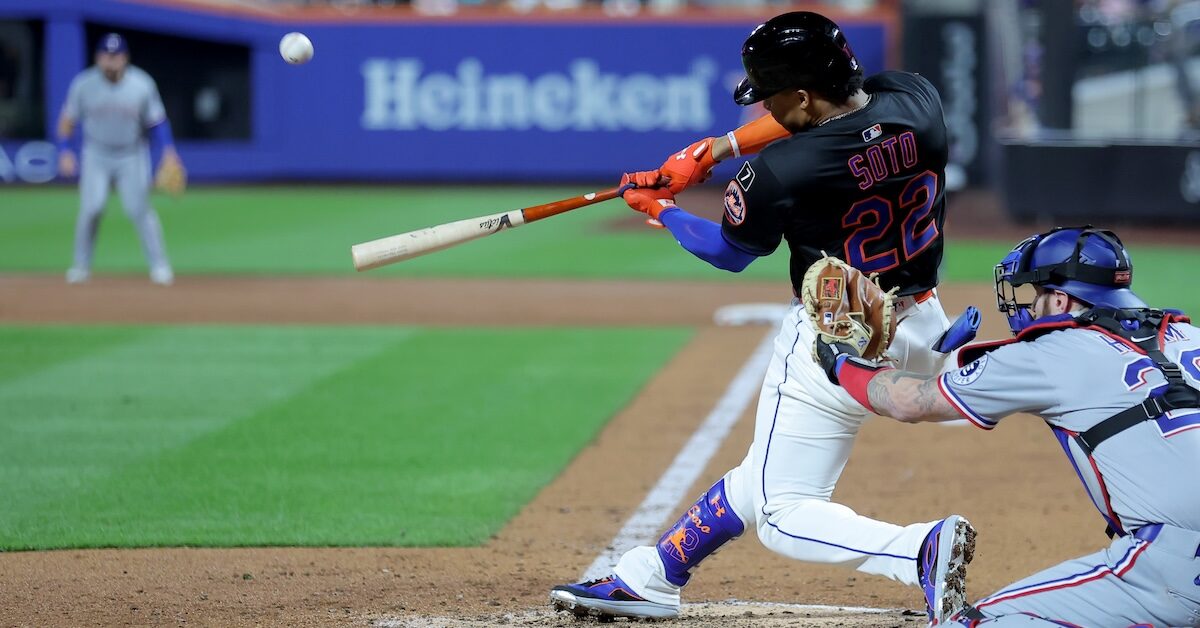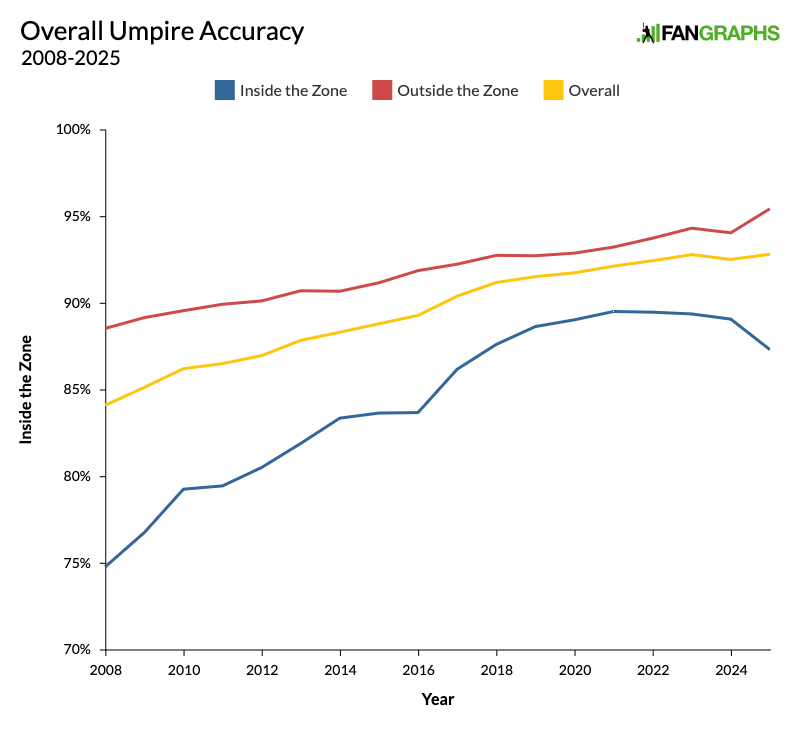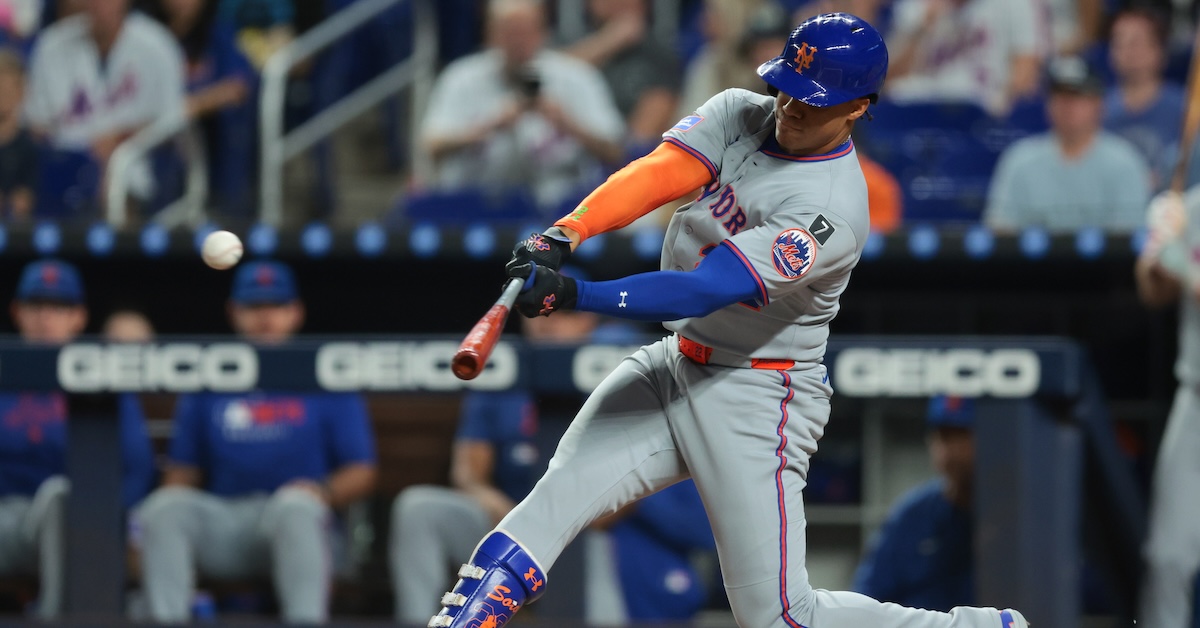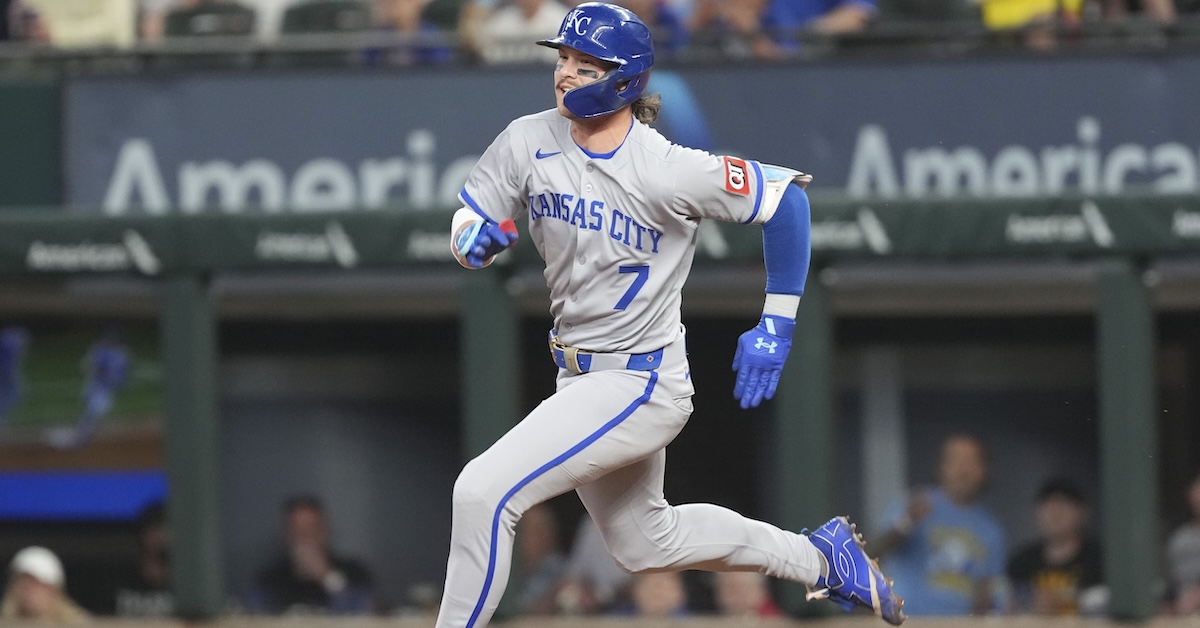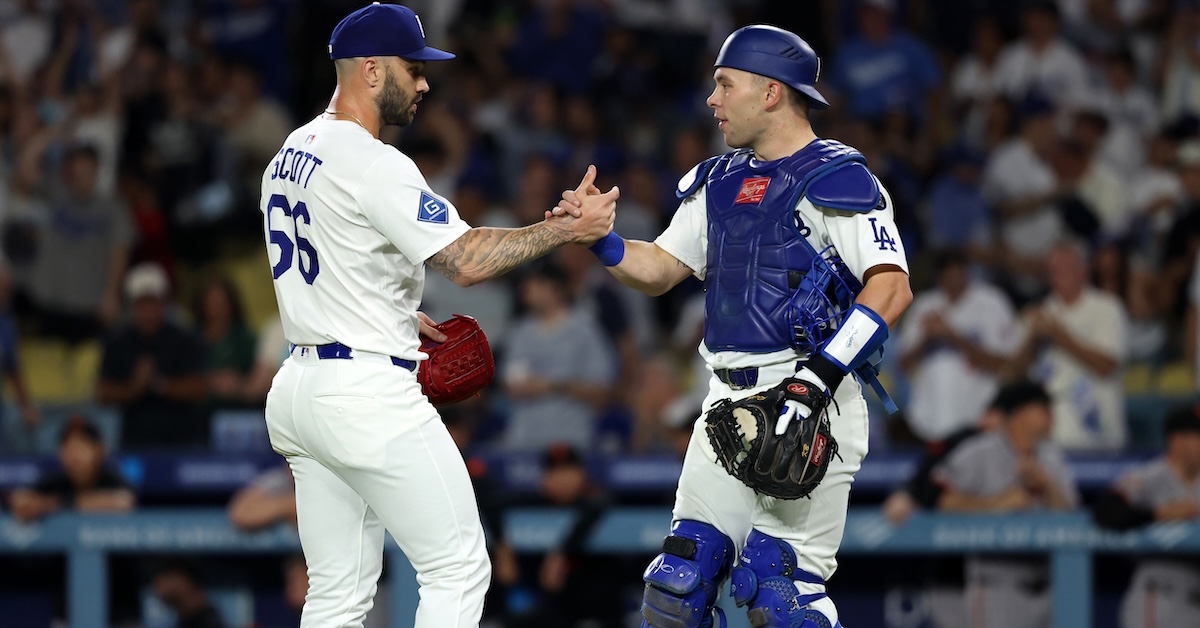Too Much Math About an Old Adage
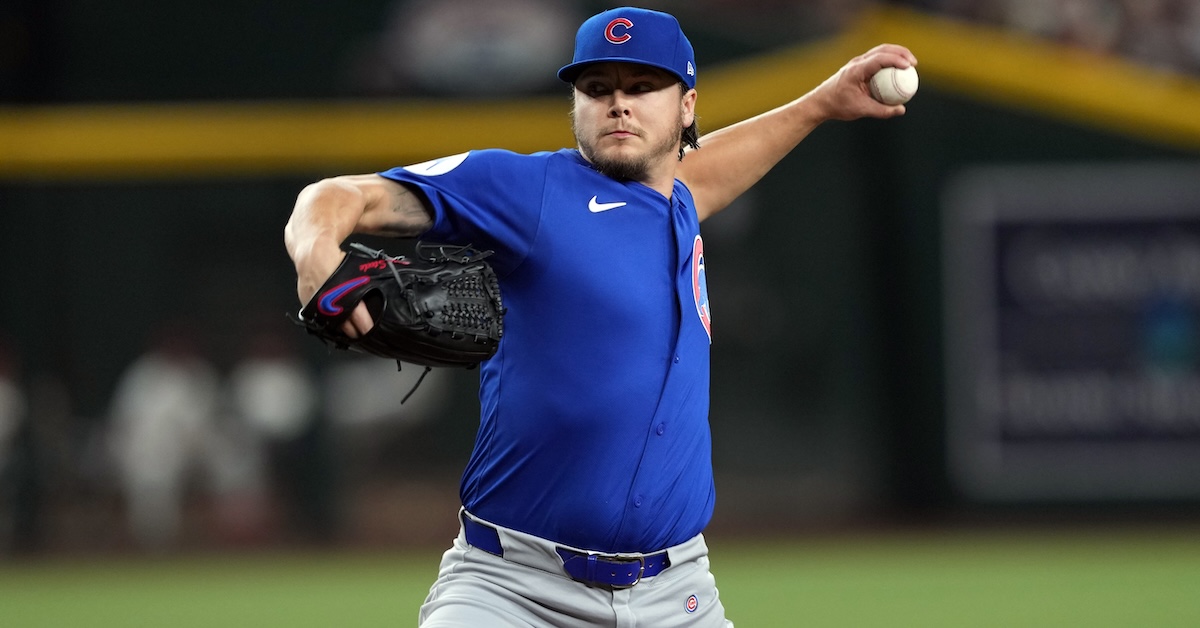
I never pitched in Little League, but I remember many of the lessons our coach imparted to this day. Most specifically, I remember him harping on “hard in and soft away.” This was silly. Nobody on my team could throw a curveball, and even from my youthful perspective, no one could throw anything hard either. We all mostly struck out or walked; pitchers with command were pretty much untouchable in my small-town East Tennessee league. But we’re losing the plot here – as it turns out, that advice is omnipresent in baseball, from little leagues to the majors.
I’ve always been enamored with this simple and yet fascinating rule of thumb. Why does it work? Does it work, even? What’s so special about “in” and “away” relative to pitch speed? I’ve never quite found a satisfactory way to classify it. But while I was taking a look at contact point data last week, I came up with an idea for how to measure this. When you look at the data, the evidence has been there all along.
I focused on the “hard in” aspect of the adage, because major leaguers throw so many different secondaries that honing in on what “soft” meant seemed impossible. To that end, I devised a quick test to see how conventional wisdom behaves in practice. I defined “inside” and “outside” pitches by removing the middle third of the plate, then extending out nine inches past the edge of the strike zone in both directions. I looked at sinkers and four-seamers thrown in these areas to define “hard in” and “hard away.” Read the rest of this entry »

